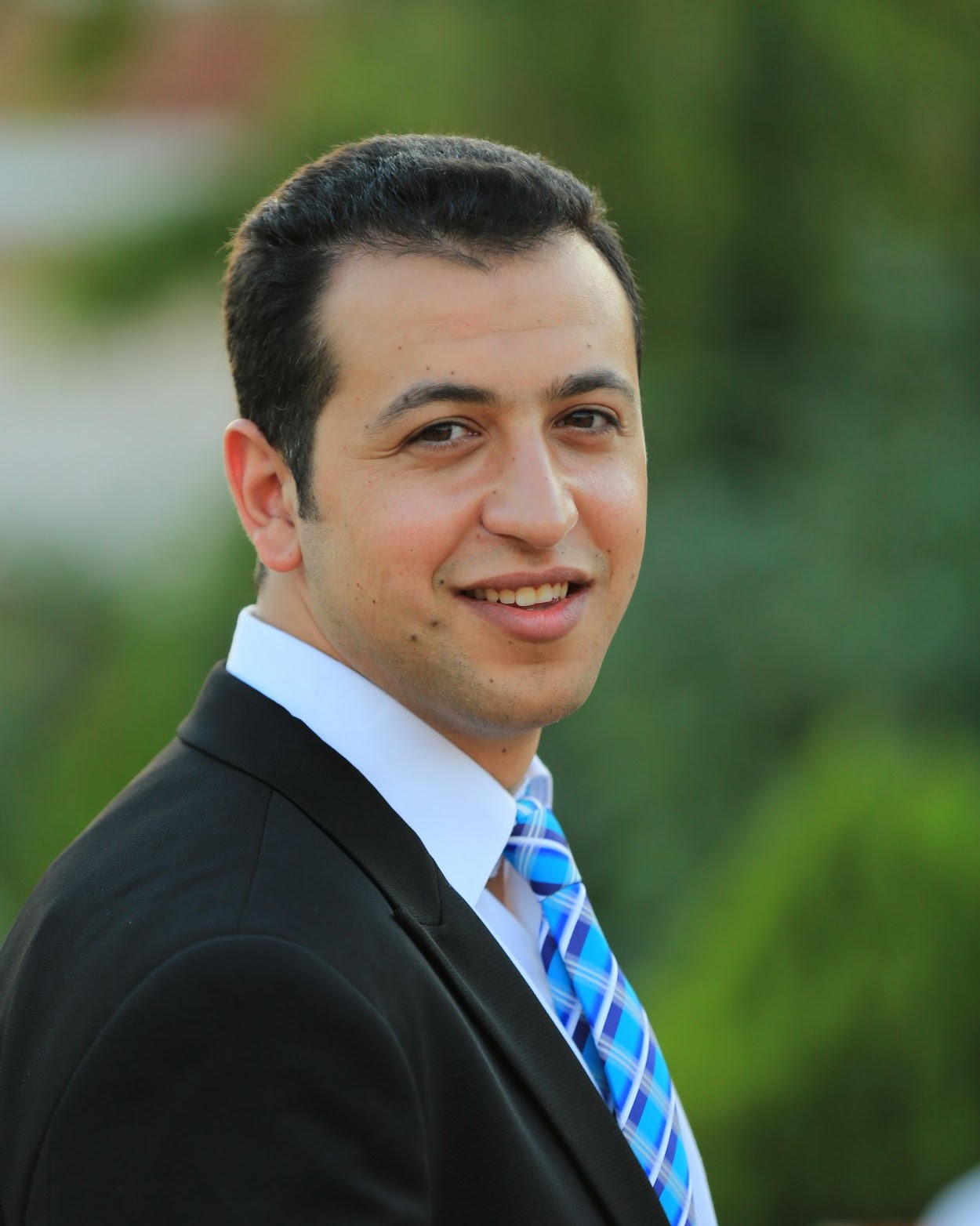About Course
Wireless Communications: From Theory to Practice (Wireless Communication Principles – Basics to Advanced): If you want to prepare yourself to work in companies like NOKIA, HUAWEI, SAMSUNG, APPLE, GOOGLE, FACEBOOK, MICROSOFT, ERICSSON, QUALCOMM, INTEL, ZTE, or want to be an entrepreneur engineer in the ICT industry, then, this course is just for you.
Introduction to wireless communication covers IMPORTANT topics related to transceiver structure and wireless medium characteristics including path loss and shadowing, statistical multi-path channel models, the capacity of wireless channels, digital modulation techniques and their performance analyses in the wireless medium, diversity methods, coding techniques, multicarrier systems (OFDM), multiple antennas (MIMO) and Spatio-temporal analysis, multi carrier-based modulation, spread spectrum analysis, multi-user systems, cellular systems, and wireless networks.
More specifically, the covered topics in the course are listed as follows:
- L0 – The course content (main topics) and some details about evaluation criteria19:27
- L1 – P1 – Brief introduction to wireless communication and background41:56
- L1 – P2 – Brief introduction to wireless communication and background1:05:36
- L1 -P3 – Introduction to wireless mobile communication systems35:05
- L2 – Wireless Propagation Characteristics: (Large scale / Path-loss & Shadowing Models)56:38
- L3 – Wireless Propagation characteristics: shadowing, outage performance, & measurement vs statistical models14:24
- L4 – Wireless Propagation Characteristics: (Multipath Narrow-Band Model)33:30
- L5 – Wireless Propagation Characteristics: (Multipath Wide-Band Model, Time-varying Impulse Response & Delay-Doppler Model)29:23
- L6 – Wireless Propagation Characteristics: Fading, Power Delay Profile & Doppler Power Spectrum Density54:00
- L7: Capacity of Flat-Fading Channels42:49
- L8: Capacity of Frequency Selective Fading Channels53:13
- L9: Linear Modulation and Outage Probability over Fading Channels13:20
- L10: Effect of Fading, Doppler, and Delay Spread on Average Outage Probability13:27
- L11: Diversity in wireless communication: concept and techniques1:22:51
- L12: Adaptive Modulation in wireless communication: concept and approaches48:25
- L13: Multiple Input Multiple Output (MIMO) Systems43:45
- L14: Techniques for Overcoming Interference in Wireless Systems: OFDM, WCDMA, Equalization, Multiuser Networks (multiple access and random access)52:41
- L15: Spread spectrum and multi-user communication in wireless cellular systems50:57
- L16 – OFDM in Details. Why should you know it? What is it? and What are its merits/advantages & demerits?1:17:00
- L17 – OFDM Simulation Using Matlab Software: Full Tutorial1:44:35
- L18: Wireless Channel Estimation39:03
- L19: Multi-layer precoding for MIMO17:03
- L20: Modelling Wireless Channels15:07
- L21: Building a complete OFDM model that can send and receive real-time signals carrying IP packets20:17
- L22: Build Advance NFM SCOPE Receiver with real-time Recorder GNU-RADIO Win101:16:38
- The Story of communication systems evolution from an information theory perspective
======== About the Insturctor ===========
Jehad M. HAMAMREH is the Founder and Director of WISLABi/com, Editor at Researcherstore/com & RS-OJICT journal, as well as A. Professor with Electrical and Computer Engineering Department, Antalya International (Bilim) University. He earned his Ph.D. degree in Telecommunication Engineering and Cyber-Systems from Medipol University. Previously, he worked as a Researcher at the Department of Electrical and Computer Engineering at Texas A&M University. He is the inventor of more than 20 Patents and has authored more than 90 peer-reviewed scientific papers along with several book chapters. His innovative patented works won the gold, silver, and bronze medals in numerous international invention contests and fairs.
His current research interests include Wireless Communication, Wireless Security, Wireless Sensing, O-RAN, 5G/6G, IoT, AI/ML, wireless physical and MAC layers security, orthogonal frequency-division multiplexing (OFDM), multiple-input multiple-output systems (MIMO), advanced waveforms design, multidimensional modulation techniques, and orthogonal/non-orthogonal multiple access schemes for future wireless systems. He is a regular investigator and a referee for various scientific journals as well as a TPC member for several international conferences. He is an Editor at RS-OJICT and Frontiers in Communications and Networks.
Key Research Topics: Wireless Communication, Wireless Security, Wireless Sensing, Open RAN, 5G/6G, IoT-AI
=========
Wireless Communication Principles – Basics to Advanced. If you want to prepare yourself to work in companies like NOKIA, HUAWEI, SAMSUNG, APPLE, GOOGLE, FACEBOOK, MICROSOFT, ERICSSON, QUALCOMM, INTEL, ZTE, etc. Then, this course is for you. Introduction to wireless communication covers IMPORTANT topics related to transceiver structure and wireless medium characteristics including path loss and shadowing, statistical multi-path channel models, the capacity of wireless channels, digital modulation techniques and their performance analyses in the wireless medium, diversity methods, coding techniques, multicarrier systems (OFDM), multiple antennas (MIMO) and Spatio-temporal analysis, multi carrier-based modulation, spread spectrum analysis, multi-user systems, cellular systems, and wireless networks.
=========== About the course instructor: Dr. Jehad Hamamreh ===========
J. M. HAMAMREH, Ph.D. (Bio in bullet points)
-
The Founder and Director of WISLABi.com for providing practical wireless research innovations.
-
A Board Member at Researcherstore.com for helping academics monetize research and teaching assets by converting them into digital products.
-
Asst. Prof. at Antalya International/Bilim University (ECE Department).
-
An Editor at RS-OJICT (rs-ojict.pubpub.org) and Frontiers in Communications and Networks.
-
A Reviewer and Investigator in more than 25 peer-reviewed scientific Journals, and TCP committee member and organizer for many international conferences.
-
An early member of the massive Telcom Infra Project (TIP) by Facebook.
-
Worked as a Researcher at the Department of Electrical and Computer Engineering at Texas A&M University as well as at CoSINC, Medipol University.
===========
-
He is the inventor of more than 20 Patents. Mostly known as the inventor of keyless perfect secrecy using diversity, Number Modulation, and Power Modulation in OFDM and MIMO systems, as well as Advanced NOMA.
-
An author of more than 90 peer-reviewed scientific papers.
-
An author of 2 books and 8 book chapters in 6 different books.
-
His innovative patented works won the gold, silver, and bronze medals in numerous international invention contests and fairs.
-
Received the top researcher award of ABU three times, 2018, 2021, 2022.
===========
-
His current research interests include Wireless Communication, Wireless Security, Wireless Sensing, O-RAN, 5G/6G, IoT, AI/ML, wireless physical and MAC layers security, orthogonal frequency-division multiplexing (OFDM), multiple-input multiple-output systems (MIMO), advanced waveforms design, multidimensional modulation techniques, and orthogonal/non-orthogonal multiple access schemes for future wireless systems.
-
Key Research Topics: Wireless Communication, Wireless Security (PLS), Wireless Sensing, Open RAN, 5G/6G, IoT-AI
===========
-
Links and Profiles:
Youtube channel: https://www.youtube.com/channel/UCQ2pa8MbKerA0saQmc9rI6Q
Research Group: WISLAB for Wireless Research (wislabi.com)
RS Store: https://researcherstore.com/store/advanced-telecom/
RS Courses: https://researcherstore.com/profile/advanced-telecom/
Google Scholar: https://scholar.google.com.tr/citations?hl=en&user=pEgDDPIAAAAJ
Researchgate Profile: https://www.researchgate.net/profile/Jehad-Hamamreh
Linkedin Profile: https://www.linkedin.com/in/jehad-m-hamamreh/
Academia Profile: https://antalya.academia.edu/JehadHamamreh
Technical Facebook Group: https://www.facebook.com/groups/3338566672842802
Email: [email protected]
Course Content
Wireless Communication: From Theory to Practice by Dr. Jehad Hamamreh
-
About the Instructor Dr. Jehad Hamamreh
03:09 -
Overview and background introduction – L1-P1 – What really happen when you want to send something from the transmitter to the receiver?
20:10 -
Overview and background introduction – L1-P2 – How bits, zeros and ones, are directly related to transistors, electrical signals and frequency spectrum?
12:55 -
Overview and background introduction – L1-P3 – Unfolding the physical layer and understanding its main building blocks and their jobs
20:15 -
Overview and background introduction – L1-P4 – Explaining the details of Modulation in the physical layer and how it really works
06:33 -
Overview and background introduction – L1-P5 – Explaining the concept of waveforming and pulse shaping and how it works in the physical layer
11:14 -
L1 -P6 – Introduction to wireless mobile communication systems: why should we study this field and become experts at it?
35:06 -
Overview and background – L2-P1 – How can you model wireless communication systems? and what are the main performance metrics?
28:52 -
Overview and background – L2-P2 – Developing the mathematical model of a transmission system over a flat fading wireless channel
16:06 -
Overview and background – L2-P3 – Developing the mathematical model of a transmission system over a time dispersive wireless channel
13:26 -
Overview and background – L2-P33 – How does MRC method work at the receiver when experiencing a dispersive multipath channel?
02:39 -
Overview and background – L2-P4 – How do we handle dispersive multipath channels in 4G using the OFDM transmission method?
11:01 -
Overview and background – L2-P5 – Explaining the main building blocks of OFDM and their functionalities briefly
08:28 -
Overview and background introduction – L2-P6 – Explaining dispersive channels in frequency domain and how they compare to time dispervise channels
22:11 -
L2 – Wireless Propagation Characteristics: (Large scale / Path-loss & Shadowing Models)
56:38 -
L3 – Wireless Propagation characteristics : shadowing, outage performance, & measurement vs statistical models
14:24 -
L4 – Wireless Propagation Characteristics: (Multipath Narrow-Band Model)
33:30 -
L5 – Wireless Propagation Characteristics: (Multipath Wide-Band Model, Time-varing Impulse Response & Delay-Doppler Model)
29:23 -
L6 – Wireless Propagation Characteristics: Fading, Power Delay Profile & Doppler Power Spectrum Density
54:00 -
L7: Capacity of Flat-Fading Channels
42:50 -
L8: Capacity of Frequency Selective Fading Channels
53:12 -
L9: Linear Modulation and Outage Probability over Fading Channels
13:20 -
L10: Effect of Fading, Doppler and Delay Spread on Average Outage Probability
13:26 -
L11: Diversity in wireless communication: concept and techniques
01:22:51 -
L12: Adaptive Modulation in wireless communication: concept and approaches
48:25 -
L13: Multiple Input Multiple Output (MIMO) Systems
43:45 -
L14: Techniques for Overcoming Interference in Wireless Systems: OFDM, WCDMA, Equalization, Multiuser Networks (multiple access and random access)
52:41 -
L15 : Spread spectrum and multi-user communication in wireless cellular systems
50:56 -
L16 – OFDM in Details. Why should you know it? What is it? and What are its merits/advantages & demerits.
01:17:00 -
L17 – OFDM Simulation Using Matlab Software: Full Tutorial
01:44:30 -
L21: Building a complete OFDM model that can send and receive real time signals carrying IP packets
20:17 -
L22: Build Advance NFM SCOPE Receiver with real time Recorder GNU-RADIO Win10
01:16:38 -
MIMO Detection, Equalization and Estimation Techniques at the Receiver – Part 1
10:09 -
MIMO Detection, Equalization and Estimation Techniques at the Receiver – Part 2
13:38 -
MIMO Detection, Equalization and Estimation Techniques at the Receiver – Part 3
19:06 -
MIMO Detection, Equalization and Estimation Techniques at the Receiver – Part 4
10:33 -
MIMO Detection, Equalization and Estimation Techniques at the Receiver – Part 5
09:13 -
how to write a scientific paper or journal article
04:20 -
The Mathematical Design Modeling of STBC scheme (Alamouti coding 2*1)
05:16 -
The Math of STBC Equalization and Detection (Alamouti coding 2*1)
13:50 -
Can WiFi and Cellular Work jointly on the user device to increase the down-link data speed?
01:47 -
Is WiFi with 5G signal a part of the 5G technology
01:19 -
The differences between WiFi Standards and Cellular Standards
08:38 -
How does having more antennas with the WiFi Access points affect the internet speed performance?
08:51 -
MIMO spatial multiplexing PreEqualization / Precoding at the Transmitter
09:29 -
Ml based equailzers: when and why to use them?
08:23 -
example of where we can use ML to solve a practical problem in wireless telecommunications
04:30 -
Homework problem on applying ML to wireless communication systems equalizers
22:12 -
Wireless: Sample questions and solutions with explanations on Diversity and Adaptive Modulation – P1
24:40 -
Wireless communications: Sample exam questions and solutions with explanations – Part 2
15:15 -
L18: Wireless Channel Estimation
39:03 -
L19: Multi-layer precoding for MIMO
17:03 -
L20: Modelling Wireless Channels
15:08 -
The Story of communication systems evolution from an information theory perspective
01:29:32 -
Frequent Interview Questions by Mobile Telecom Companies
00:00


